Tobias Böttger
MVTec D2S: Densely Segmented Supermarket Dataset
Jul 25, 2018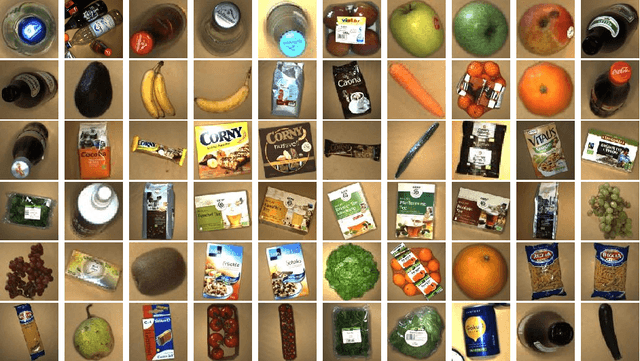
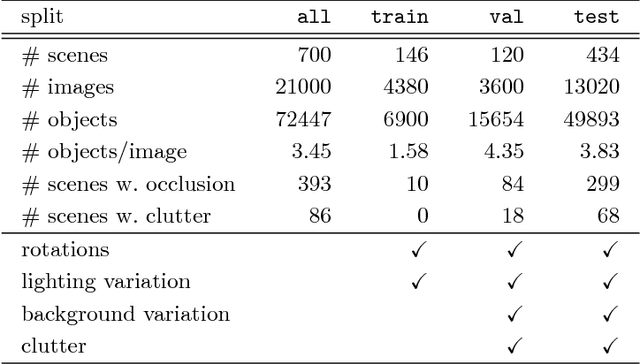

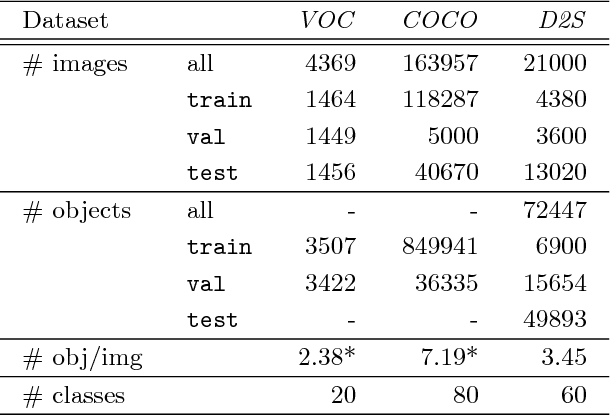
Abstract:We introduce the Densely Segmented Supermarket (D2S) dataset, a novel benchmark for instance-aware semantic segmentation in an industrial domain. It contains 21,000 high-resolution images with pixel-wise labels of all object instances. The objects comprise groceries and everyday products from 60 categories. The benchmark is designed such that it resembles the real-world setting of an automatic checkout, inventory, or warehouse system. The training images only contain objects of a single class on a homogeneous background, while the validation and test sets are much more complex and diverse. To further benchmark the robustness of instance segmentation methods, the scenes are acquired with different lightings, rotations, and backgrounds. We ensure that there are no ambiguities in the labels and that every instance is labeled comprehensively. The annotations are pixel-precise and allow using crops of single instances for articial data augmentation. The dataset covers several challenges highly relevant in the field, such as a limited amount of training data and a high diversity in the test and validation sets. The evaluation of state-of-the-art object detection and instance segmentation methods on D2S reveals significant room for improvement.
Acquire, Augment, Segment & Enjoy: Weakly Supervised Instance Segmentation of Supermarket Products
Jul 06, 2018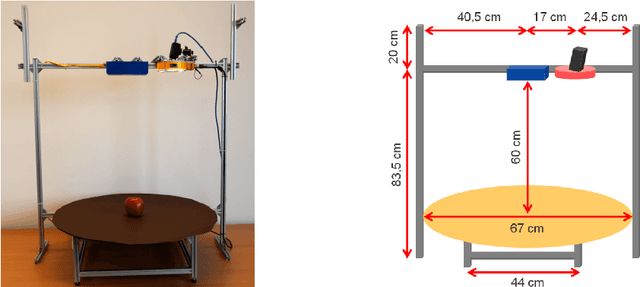
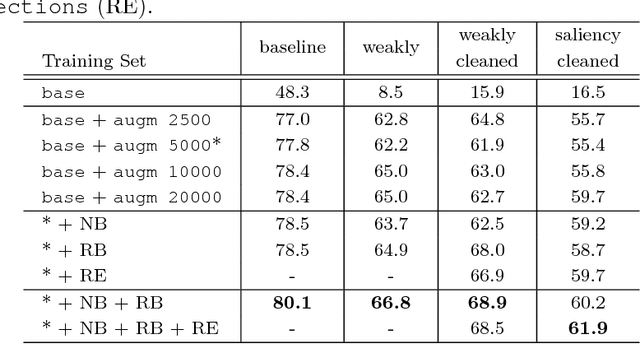
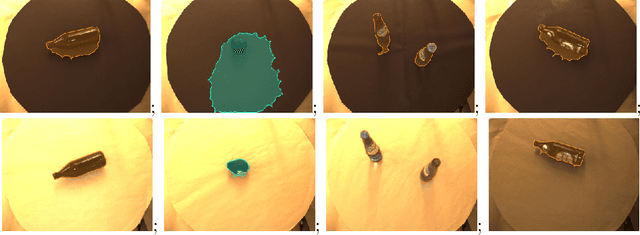

Abstract:Grocery stores have thousands of products that are usually identified using barcodes with a human in the loop. For automated checkout systems, it is necessary to count and classify the groceries efficiently and robustly. One possibility is to use a deep learning algorithm for instance-aware semantic segmentation. Such methods achieve high accuracies but require a large amount of annotated training data. We propose a system to generate the training annotations in a weakly supervised manner, drastically reducing the labeling effort. We assume that for each training image, only the object class is known. The system automatically segments the corresponding object from the background. The obtained training data is augmented to simulate variations similar to those seen in real-world setups.
Subpixel-Precise Tracking of Rigid Objects in Real-time
Jul 05, 2018



Abstract:We present a novel object tracking scheme that can track rigid objects in real time. The approach uses subpixel-precise image edges to track objects with high accuracy. It can determine the object position, scale, and rotation with subpixel-precision at around 80fps. The tracker returns a reliable score for each frame and is capable of self diagnosing a tracking failure. Furthermore, the choice of the similarity measure makes the approach inherently robust against occlusion, clutter, and nonlinear illumination changes. We evaluate the method on sequences from rigid objects from the OTB-2015 and VOT2016 dataset and discuss its performance. The evaluation shows that the tracker is more accurate than state-of-the-art real-time trackers while being equally robust.
Derivate-based Component-Trees for Multi-Channel Image Segmentation
Apr 19, 2018



Abstract:We introduce the concept of derivate-based component-trees for images with an arbitrary number of channels. The approach is a natural extension of the classical component-tree devoted to gray-scale images. The similar structure enables the translation of many gray-level image processing techniques based on the component-tree to hyperspectral and color images. As an example application, we present an image segmentation approach that extracts Maximally Stable Homogeneous Regions (MSHR). The approach very similar to MSER but can be applied to images with an arbitrary number of channels. As opposed to MSER, our approach implicitly segments regions with are both lighter and darker than their background for gray-scale images and can be used in OCR applications where MSER will fail. We introduce a local flooding-based immersion for the derivate-based component-tree construction which is linear in the number of pixels. In the experiments, we show that the runtime scales favorably with an increasing number of channels and may improve algorithms which build on MSER.
Efficiently Tracking Homogeneous Regions in Multichannel Images
Aug 16, 2017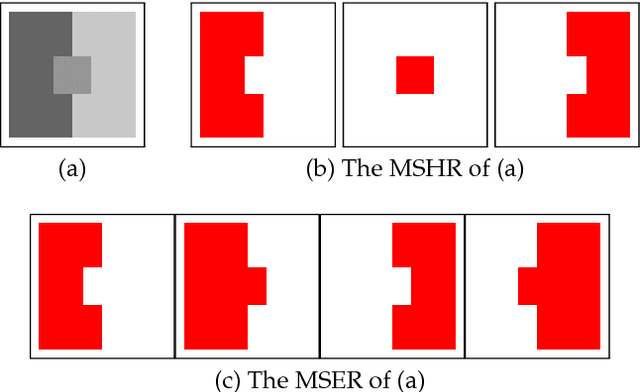
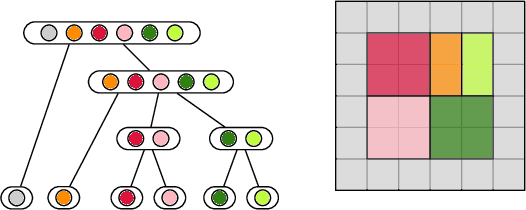
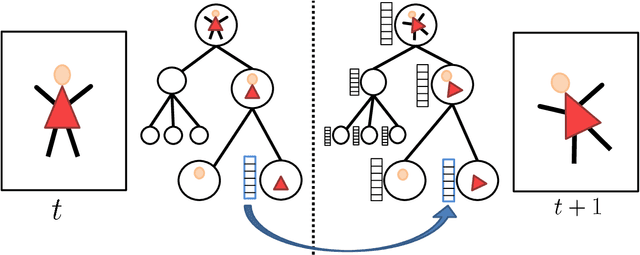

Abstract:We present a method for tracking Maximally Stable Homogeneous Regions (MSHR) in images with an arbitrary number of channels. MSHR are conceptionally very similar to Maximally Stable Extremal Regions (MSER) and Maximally Stable Color Regions (MSCR), but can also be applied to hyperspectral and color images while remaining extremely efficient. The presented approach makes use of the edge-based component-tree which can be calculated in linear time. In the tracking step, the MSHR are localized by matching them to the nodes in the component-tree. We use rotationally invariant region and gray-value features that can be calculated through first and second order moments at low computational complexity. Furthermore, we use a weighted feature vector to improve the data association in the tracking step. The algorithm is evaluated on a collection of different tracking scenes from the literature. Furthermore, we present two different applications: 2D object tracking and the 3D segmentation of organs.
 Add to Chrome
Add to Chrome Add to Firefox
Add to Firefox Add to Edge
Add to Edge